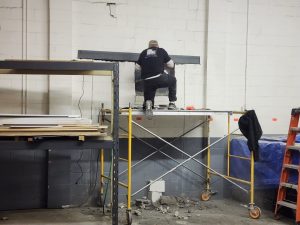Are you getting the most from your Facebook posts? Facebook is the easiest way to reach your audience, but most don’t realize it is also the front door to their business. You need to make a good impression and come off looking professional. Here are a few basic tips and a couple advanced ones to help you get your message across.
IT’S POST TIME?

This doesn’t refer to getting your bets in before the horses leave the gate. This has to do with the best time to make your post. Facebook makes it easy to know the habits of your fans and when they are on Facebook. Under your “insights” page go to “posts” to find out the best time to make a post in order to catch your fans while they are online. It is recommended to post at least once a day, but never more than twice. So one and a half posts a day should be fine.
THE @ SYMBOL IS NOT JUST FOR EMAIL ANYMORE.

Everyone likes to be mentioned on Facebook in a positive manner. Next time you work with a company, post about your recent work together using the @ symbol to link to their page. The benefit to this, depending on the company’s settings, is you can show up on their page for their fans to see and the company can reciprocate with the same style of post.
SIZE DOES MATTER, FOR IMAGES AND VIDEOS

For best result when posting images and videos, follow Facebook’s recommended sizes to get the most out of your post. This is especially advantageous when using images for articles linking to your website. The following sizes are what Facebook suggests.
THE REAL OG IS OPEN GRAPH

This can be a little intimidating at first, but once you try it out, it really isn’t that difficult. Using Open Graph (og) will give you a more professional looking post. The following “meta properties” must be placed in the head of your website. When viewing your html code, place the “meta properties” betweenand. Each “meta property” can just be copied and placed in the coding. Just change what is in red to your specifications. There are many “how to” articles about adding Open Graph to websites that can step you through the process.
- The title that will appear with the link to the url.
- This is the link to the image that you are using for your Facebook post. This does not have to be an image that you have on the linked page, but instead can be one better formatted for Facebook.
- This is the link to the page you are posting.
- This is the text description that will appear under the image on the Facebook post.
- This is a reference proprty so that Facebook knows what type of page you are posting. For a detailed list click here.
MEASURE TWICE, POST ONCE
Facebook realized how frustrating it can be to try to get your post to look perfect on the first try. So under the developer tools, they give you a debugger tool to test out your link before you post. This comes in handy because it does not keep your post in Facebook’s cache, like it does with wall posts, allowing you to make changes after testing. The debugger tool is used with the “meta properties” that we talked about previously and can be found here.

Once you enter the URL that you want to test, you will be given the information similar to what is seen in the picture below. This information is taken from the “meta properties” you have entered into your html code. If everything is entered correctly, it should appear like the following image.

If you don’t like what shows up, you can go back and make changes and test again. Once everything is correct, you can confidently send a professional looking post to your Facebook wall.




